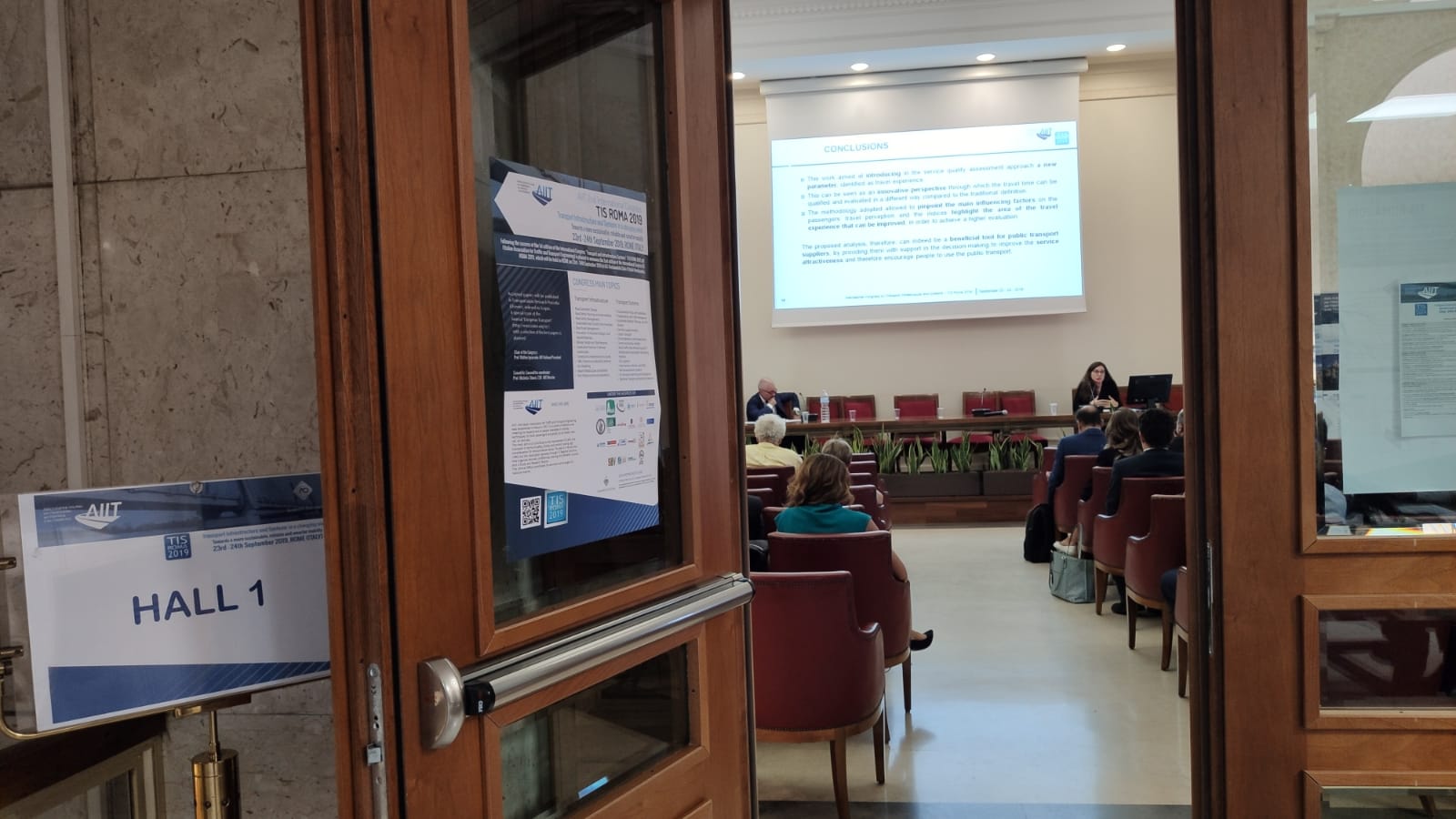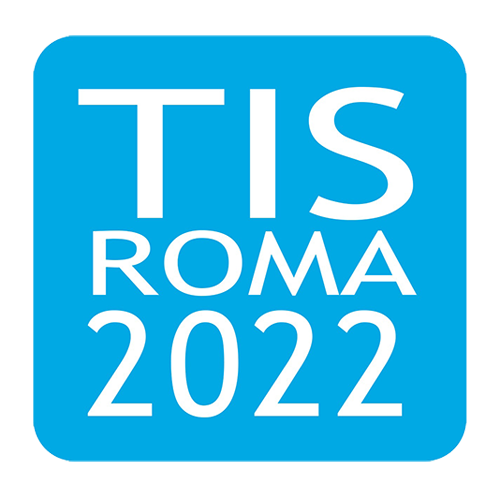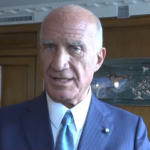TIS 2019
Session 3 – Public Transport Systems

This session was chaired by Marco Medeghini and it aims to analyse the public transport, in particular buses and what kind of impact do they make on lives of citizens.
Michela Bonera, Giulio Maternini, Graham Parkhurst, Daniela Paddeu, William Clayton and David Vetturi – Travel experience on board urban buses: a comparison between Bristol and Brescia / The aim of this research is to investigate the concept of travel experience. The time spent travelling is converted into economic terms as a cost, thus the shorter the travel time, the greater the benefit obtained. This study is useful for the investigation of the concept of travel experience and it can be useful for the transport supplier to have access to further informaton about consumers’ habits. Transport service suppliers are trying to provide faster trips, seeking to ensure users spend as little time as possible travelling, without considering the potential of approaches to increase the perceived value of time, such as implementing other optional facilities on board, so that reducing it becomes less important. The present paper relies on a comparative investigation of two different contexts, Bristol (UK) and Brescia (IT), analysing the quality of time spent on board urban buses. Methodologies used in this research are data collectionm data precessing, descriptive statistics etc. The implications of the research are that implementing some optional facilities could substantially enhance the attractiveness of the bus service. To provide a more direct quantitative evaluation of travel experience, a Travel Experience Index has been implemented.
Fabio Porcu, Alessandro Olivo, Giulio Maternini and Benedetto Barabino – Evaluating bus accident risks in public transport / It is clear that bus accidents have implicatons for public transport companies. Besides the fact that these kind of accidents are rarely elaborated in the literture it is also traditionally concidered a safe mode of transport and it improves road safety by reducing vehicular traffic. The aim of this study is to develop the methodology for the evaluation for the evaluation of bus safety performance according to a risk accident index for each transit road. At first, the methodology identifies the risk components in terms of frequency, severity and exposure factors that may affect bus accidents. Next, it integrates these terms, to build a risk bus accident function providing a ranking of safety performance for each route. The experiment performed by the group shows that transit managers could adopt this methodology to perform an accurate safety analysis on each route. The contribution of this study is reflected in introducing a new methodology that helps evaluate risk of accidents and assessment of risk of accidents
Mykola Zhuk, Antonio Comi, Volodymyr Kovalyshyn and Volodymyr Hilevych – Investigating bus travel time and predictive models: a time series-based approach / The time of travel is concidered one of the main parameters of the urban transport performance. The possibility of time forecast is an important planning tool for public transport companies. This study based the results on the relevance of time forecast on experimental evidences. The analysis is performed using data from automated vehicle monitoring of buses lines sharing the way with other traffic in Lviv (Ukraine). The results prove the goodness of such an approaches and the opportunity offered to operators to improve their services. Since this research regards long term forecasting, it can open new research opportunities for short term forecasting to develop methods and models that take the expected pattern into account.
Gianfranco Fancello, Patrizia Serra, Mariangela Daga, Paolo Fadda, Massimiliano Pau, Federico Arippa and Andrea Medda – An experimental analysis on Driving behavior for professional bus / In recent years, the issue of driving behavior analysis for professional drivers has have great interest by the transport companies: the Driver Qualification Card, recently introduced in most European countries, has focuses the attention on the knowledge of driving behavior for professional drivers, aimed at defining the continuous training activities, with the aim of improving system performance (speed, frequency, regularity, ect.) and, above all, the driving safety conditions, with particular attention to the topic of human factors. Starting from these aspects, the paper summarizes the results of an analysis on the driving behavior of 40 professional bus drivers, monitored through a questionnaire carried out at the end of their work shift: the analysis is aimed at linking some specific characteristics of drivers (age, driving experience, eye vision, ect.) with other related to the journey (road signals reading, traffic components perception, driving difficulties, ct.). The goal is to find the correlation between the drivers’ psychophysical characteristics with their behaviors’ variables collected during driving, to evaluate which elements have the greatest impact on drivers’ performance. The analysis was conducted through an analysis of qualitative data, through the application of multiple correspondences analysis and cluster analysis, and quantitative data, through the application of ANOVA technique. Conclusion is the link between the age and body weight. There is a clear necessity for further analysis involving larger sample of drivers.
Alessandro Ferri – The bus becomes electric: new scenarios, new operators / This study analyses the transition to electric mobility in public transportation represented by the advent of eBus (= ‘full size’ electric bus) to replace buses with conventional engines. It is estimated that until 2040 more than 81% of urban buses will be electrically powered. The idea of eBus contains complex and innovatice technologies, both in energy distribution and storage and in the operational management of vehicles. It allows combining the flexibility of road transport with the efficiency and the environmental and energy advantages of electric traction. It repesents a solution for a pollution, increases quality of life, air quality, emission restricitions etc. Unfortunately because of the high costs in finds many financial and poltical barriers. Still, main barriers are infrastructures and energy. Our speech assumes, therefore, the feasibility of roadmaps that allow the reduction of these initial costs thanks to technological evolution and the combination of the innovative factors underlying it. The evolution of the role of managers will, in fact, encourage the emergence of new operators in public transport, thanks to unprecedented partnerships that equally involve the energy and automotive players.
Paolo Delle Site and Francesco Filippi – Impacts of tour buses in Rome / Tour buses (TB) are used in cities mainly for group travel. Rome’s new restriction on TB led to charges up to 20 times higher than before. A drop in demand, supply and jobs in the competitive tourism sector can be expected. This might cause problems and Rome, as a major touristic destination, has to find a way to conciliate the needs of accessibility by citizens and businesses with those of health and protection of the architectural-artistic heritage of the historic centres. The study reported on here aimed to verify the validity of this regulation approach by evaluating the real impacts of tour buses through data provided by official agency and traffic simulations. The simulations have confirmed that TB are efficient in impact on both circulation and occupation of space. The same can be said of ordinary city buses, but TB offer better accessibility, greater comfort, and, not being subsidized, economic sustainability. The study has called attention to substantial differences in the attitude towards TB between Italy and Central and Northern Europe. In London, Stockholm, Paris, and Berlin, TB are regarded as a resource to reduce traffic and pollution and for the economy of the city. It i salso said that the Italian approach to this problem is an example of how to slow down the development of a growing sector across Europe.
Alberto Croce – Setting a new paradigm for Local Public Transport (TPL) – The Brescia Agency experience / Brescia is located in the eastern part of Lomardy. It’s general features are strong economy and tourism. It leads to some mobility issues especially towards Garda Lake. For that occasion in 2013 the Agency TPL of Brescia is constituted. It has been set up to achieve a more effective model of governance. The very important program established by this agency is Programma di Bacino del TPL which is ment to redesign the local transport service.
CHAIRMAN: Marco Medeghini





